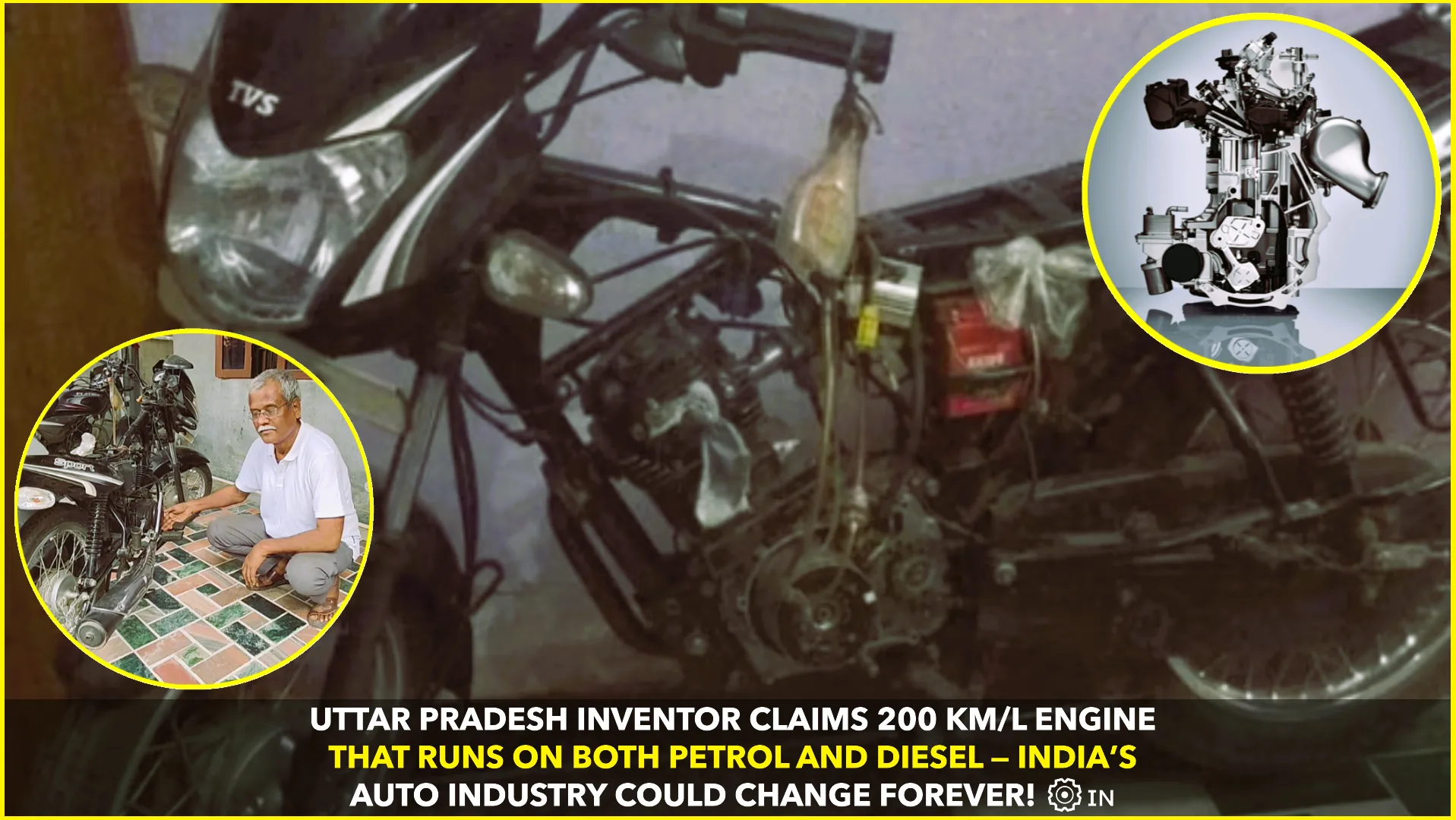India’s automobile and fuel industries may soon face a revolution—or a rude awakening. Shailendra Gaur, an inventor from Uttar Pradesh, has claimed to develop a six-stroke internal combustion engine that runs on both petrol and diesel, offering up to 200 kilometers per litre and almost zero pollution.
If true, this could drastically change India’s dependency on fossil fuels, slash transportation costs, and deliver a major blow to major petrol companies and car manufacturers.
The Revolutionary Idea
Gaur’s invention is based on expanding the traditional four-stroke engine cycle by adding two additional strokes, designed to maximize fuel efficiency and reduce emissions. According to his early demonstrations, the dual-fuel six-stroke engine reuses exhaust gases to generate additional power instead of releasing them as waste—making it not just more efficient, but also environmentally cleaner.
Speaking to local media outlets, Gaur stated, “My engine can operate on both petrol and diesel interchangeably, with a performance output that exceeds current efficiency standards by several folds. It can run 200 kilometers on just one litre of fuel, and emits minimal smoke.”
He claims to have filed a patent for the design and has been testing prototypes built using standard vehicle parts modified to fit his six-stroke mechanism.
Industry and Expert Reactions
While the invention has attracted national attention and social media buzz, automotive experts remain cautious. Many agree that while the concept of a six-stroke engine isn’t new, successfully implementing it in a way that’s both commercially viable and durable is a major challenge.
Mechanical engineer and automotive analyst Dr. Sandeep Mehra commented, “We’ve seen several six-stroke concepts in the past, including those developed in France and the US, but scaling them for mass production is difficult. The idea of a 200 km/litre engine is fascinating, but it must pass rigorous lab and road tests before being accepted.”
He also added that fuel blending, engine heat management, and long-term reliability will be key areas of scrutiny before any such technology hits the market.
Why It Matters
India is the world’s third-largest oil importer, spending billions annually on crude imports. If Gaur’s invention lives up to its claims, it could potentially save the country massive amounts in fuel costs, significantly cut pollution, and accelerate India’s journey toward energy self-reliance.
Additionally, the auto sector, which contributes nearly 7% to India’s GDP, might face both disruption and opportunity. Car manufacturers could either partner with innovators like Gaur or risk being left behind if such high-efficiency engines become a market reality.
Public and Government Response
Social media platforms have been flooded with praise, curiosity, and skepticism. Many users hailed Gaur as a “modern-day innovator” from India’s heartland, while others called for official verification of his claims.
Government agencies like the Automotive Research Association of India (ARAI) and ICAT (International Centre for Automotive Technology) are expected to review the technology if Gaur submits it for evaluation.
Environmental experts, meanwhile, have expressed hope. “If validated, this could reduce vehicular pollution by up to 80%, which is massive for India’s urban air quality,” noted Dr. Neha Kapoor, an environmental researcher based in Delhi.
The Road Ahead
Despite the excitement, experts agree that commercial application may still be years away. Testing, certification, and large-scale manufacturing are time-consuming processes. However, if Gaur’s claims withstand scientific scrutiny, this could mark a historic shift in the global automotive industry, led by an Indian innovator.
As Gaur continues refining his prototype, one thing is clear—his invention has sparked a conversation that challenges established norms and inspires a new wave of Indian innovation.
Source: Times of India interview excerpts and independent reports from India Today Tech and AutoCar India (2025).










